- Home
- Graham Hancock
Underworld Page 5
Underworld Read online
Page 5
All the windstorms, exceedingly powerful, attacked as one,
At the same time the flood swept over the cult centres.
For seven days and seven nights the flood swept over the land,
And the huge boat was tossed about by the windstorms on the great waters.15
Throughout the cataclysm the skies remain dark. Then, on the eighth day, the sun breaks through the clouds, and the rains and raging storms cease. From the deck of his survival ship Zisudra looks out over a world that has changed for ever and sacrifices an ox and a sheep to the sun-god.16
An infuriating lacuna of thirty-nine lines follows, presumably telling us about the place where Zisudra makes landfall and the steps that he takes thereafter. When we pick up the story again, near the end of the text, we find him in the presence of the high gods of the Sumerian pantheon, An and Enlil, who have repented of their earlier decision to wipe mankind entirely from the face of the earth and are now so grateful to Zisudra for building his Ark and surviving the flood that they decide to make him immortal:
Life like a god they gave him;
Breath eternal like a god they brought down for him,
… Zisudra the king.
The preserver of the name of vegetation and of the seed of mankind.17
The final thirty-nine lines are missing.18
Picking and choosing
In his classic book The Sumerians, the late Professor Samuel Noah Kramer, one of the great authorities on ancient Sumer, observes that there are ‘tantalizing obscurities and uncertainties’ in this oldest surviving written version of the worldwide tradition of the flood.19 What there can be no doubt about at all, however, is that the tablet speaks of an urban civilization that existed before the flood somewhere in the Persian Gulf area and provides us with the names of its sacred cities: Eridu, Badtibira, Larak, Sippar, Shurrupak. These cities, we are told quite specifically, were swallowed up in the deluge. Moreover, long after Sumerian civilization itself had ceased to exist, a rich tradition concerning the five cities, the antediluvian epoch and the flood survived in Mesopotamia almost down to Christian times.20 Indeed it is fair to say that the traditional history of this region, as it was told in antiquity, is very clearly divided into two different periods – before and after the flood – and that both periods were regarded by the peoples of the region as absolutely factual and real.
It is only later scholars who have picked and chosen from the histories, accepting half of what they say as the basis for orthodox Sumerian chronology and rejecting the other half – concerning the antediluvian period – as myth and fantasy. Their logic is that there is no archaeological evidence for any high urban civilization in Sumer earlier than the fourth millennium BC and indeed their digs have revealed none.21 Yet, as the cliché goes, absence of evidence is not necessarily to be taken as evidence of absence – and even Kramer obviously had his doubts. In The Sumerians he recounts how, before 1952, archaeologists were unanimous in their opinion that Sumer had been uninhabited (and uninhabitable) marshland until about 4500 to 4000 BC:
This figure was obtained by starting with 2500 BC, an approximate and reasonably assured date obtained by dead reckoning with the help of written documents. To this was added from fifteen hundred to two thousand years, a span of time large enough to account for the stratigraphical accumulation of all the earlier cultural remains down to virgin soil, that is right down to the beginning of human habitation in Sumer.22
But then, continues Kramer, two geologists, Lees and Falcon, ‘published a paper which carried revolutionary implications for the date of Sumer’s first settlement’.23 They demonstrated that Sumer had ceased to be uninhabitable marshland long before 4500–4000 BC. NOW that this was understood:
It was not impossible that man had settled there considerably earlier than had been generally assumed. The reason traces of these earliest settlements in Sumer have not as yet been unearthed, it was argued, may be because the land is sinking slowly at the same time that the water-table has been rising. The very lowest level of cultural remains in Sumer may, therefore, now be under water and may never have been reached by archaeologists, since they would have been misled by the higher water level into believing they had touched virgin soil. If that should prove to be true, Sumer’s oldest cultural remains are still buried and untapped, and the date of Sumer’s very first settlements may have to be pushed back a millennium or so.24
But why only a grudging millennium or so? Once we’ve admitted it is possible that archaeologists may never have reached the oldest layers of human habitation in Sumer, why should we assume that further digging might only push the horizon back by a thousand years? Why not five thousand years? Or ten thousand years? What is this worship of the recent that archaeologists indulge in?
The reason I ask these questions with a certain amount of exasperation is that Kramer, whose work has influenced several generations of students, does not for a moment consider the possibility that Sumer’s antediluvian traditions might be based on anything real at all. Indeed, he devotes only three pages of his book to the prehistory of this ancient land before giving thirty pages to the historic period – as though all of the former is nothing more than a preamble to the latter.
I’m very struck by the extent to which Kramer relies on original Sumerian sources to build up his chronology of rulers, which begins, he says, with:
The first dynasty of Sumer whose existence can be historically attested, the so-called First Dynasty of Kish, which according to the ancients themselves followed immediately upon the subsidence of the Flood … The first ruler of Sumer whose deeds are recorded is a king by the name of Etana of Kish, who may have come to the throne quite early in the third millennium BC25
It is in precisely this way that every Sumerian text about the period after the flood is treated as grist to the mill by historians constructing chronologies while every Sumerian text about the period before the flood is relegated to the realm of the mythologists …
So little to go on
Kramer’s recognition, with the geologists Lees and Falcon, that people could have settled in the fertile valley between the Tigris and Euphrates rivers much earlier than had previously been assumed has been entirely vindicated by subsequent discoveries of the traces of ‘primitive agricultural villages’ dating back more than 8000 years.26
But the clues that have come down to us from this remote period are scanty and often ambiguous.
For example, with a tiny evidence base, are archaeologists absolutely certain that they could tell the difference between a small group of ‘primitive’ farmers and a small group of shattered and demoralized survivors from an urban civilization destroyed in a terrible flood?27 Not a river-flood, no matter how big … but a real marine flood, deep and wild and sweeping in over the land, carrying all before it like the one described in the story of Zisudra.
Woolley’s deluge
It is a river flood that has traditionally been suggested by scholars as the event described in the Zisudra text.28 This goes back to the excavations of the renowned British archaeologist Sir Leonard Woolley at the Sumerian city of Ur in 1922–9. Digging inspection trenches through thousands of years of habitation layers, he suddenly reached a layer of silt almost 3 metres deep which he described as ‘perfectly clean clay, uniform throughout, the texture of which showed that it had been laid there by water’.29 The silt itself was void of habitation evidence, but there were further habitation layers below it that he dated to 3200 BC.30
Woolley declared that he had found the first concrete proof of the cataclysm described in the Zisudra story and the biblical flood of Noah and added:
The discovery that there was a real deluge to which the Sumerian and the Hebrew stories of the Flood alike go back does not of course prove any single detail in either of those stories. This deluge was not universal, but a local disaster confined to the lower valley of the Tigris and Euphrates, affecting an area perhaps 400 miles long and 100 miles across; but for the occupants of the valley
that was the whole world!31
Woolley may not have been right that the inhabitants of the Tigris/Euphrates river valley thought of it as the ‘whole world’ but he needed to see them as geographically naive in order to explain why they had described his ‘local disaster’ as a ‘universal’ flood that threatened the survival of mankind as a whole. Neither was he necessarily right about the riverine nature of his silt layer; other, more recent, voices have suggested that it may have been laid down a few hundred years earlier than he suggested and that the agency is more likely to have been a massive transgression of the sea, followed by a gradual retreat of the waters with deposition of silt, than the work of the Tigris and Euphrates.32
Rising seas
In the 1990s Kurt Lambeck of the Australian National University carried out a detailed study of the Persian Gulf in order to map and simulate its ‘palaeo-shorelines’ from 18,000 ago – around the end of the Last Glacial Maximum-right up to today. He calculates that the modern shoreline of the region
was reached shortly before 6000 years ago, and exceeded as relative sea-level rose 1–2 metres above its present level, inundating the low-lying areas of lower Mesopotamia.33
This marine transgression, which occurred between approximately 6000 and 5500 years ago, flooded the coastal plains of Sumer and extended the northwestern shoreline of the Gulf to the doorsteps of Eridu and Ur – where the rising waters may have temporarily peaked as high as 3 metres above today’s level before receding.34 Geneticist Dr Stephen Oppenheimer, who has made a special study of floods and ancient migrations, suggests that this could have been the event that left behind the thick inundation deposit that Leonard Woolley excavated at Ur – not a river-flood at all as Woolley had believed, but a marine flood.35
In his important book Eden in the East Oppenheimer argues that what happened in the Gulf at this time, between approximately 6000 and 5500 years ago (4000–3500 BC), was the local effect of a worldwide episode of rapid, relatively short-term flooding known as the Flandrian transgression – which had a significant impact not only along the shores of the Gulf but in many other parts of Asia as well.36 Noting that ‘the destructive effect of the Flandrian transgression in wiping out coastal archaeological sites up to about 5500 years ago is now well recognized,’ he launches the interesting speculation that in the case of Sumer:
Eridu may be the oldest coastal city not destroyed by the invading sea. In other words it could have been the last old city to be built at the post-glacial high water point.37
Likewise, the distinguished Sumeriologist Georges Roux argues that between 6000 and 5000 years ago the shoreline of the Gulf was approximately 1 or 2 metres above its present level, so that its north-western coast lay ‘in the vicinity of Ur and Eridu’. Thereafter, ‘gradual regression, combined with silting from the rivers, brought it to where it is now’.38
Eridu
So I was back to the mystery of the antediluvian cities again and how they could possibly have been ‘swept over by the flood’, as the Zisudra story claimed, when Eridu had so obviously survived into historical times. In fact, as I was soon to learn, all the antediluvian cities had survived into historical times; none of them was presently underwater and at least one of them – Eridu – appeared never to have been underwater!
Between 1946 and 1949 Eridu’s ruins, located in the south of Sumer near the Euphrates, a little to the north and west of the modern city of Basra,39 were thoroughly excavated by a team from the Iraqi Directorate of Antiquities led by Fuad Safar.40 The archaeologists paid particular attention to the temple of Enki, the Sumerian god of wisdom and Eridu’s tutelary deity.41 Here they dug a deep trench through many different layers of construction and reconstruction from about 2500 BC down until they finally reached the temple’s very first building phase. Originally thought to have dated to about 4000 BC42 – itself an epoch of fabulous antiquity – the excavators kept finding older and older material.
The central structure of the site is its principal ziggurat – step-pyramid-which was erected around 2030 BC by a Sumerian king named Amar Sin.43 But it, too, turned out to stand on top of a series of earlier structures. Under one of its corners the archaeologists unearthed the ruins of no less than seventeen temples,
built one above the other in proto-historic times. The lowest and earliest of these temples (Levels XVII-XV) were small, one roomed buildings which contained altars, offering tables and a fine-quality pottery decorated with elaborate, often elegant geometric designs.44
Judging by the pottery, these earliest shrines of Eridu go back much further than 4000 BC and probably as far as 5000 BC – i.e. 7000 years ago.45 That, says Georges Roux, makes ‘Eridu one of the most ancient settlements in southern Iraq’ and a ‘remarkable’ choice in the mythology as the oldest of the antediluvian cities.46
There therefore seems to be no dispute that there was a settlement of some sort here before the region was flooded by the Flandrian transgression around 5500 years ago. Yet the excavations, which only stopped when the archaeologists reached ‘virgin soil’, ‘yielded no trace of a flood’.47 How could that be explained in an antediluvian city supposedly inundated not just by any old flood but by the flood? And how was I to make sense of the fact that ancient Ur, less than 20 kilometres away and on slightly higher ground,48 was not even named in the flood tradition and yet did show evidence of a severe, silt-bearing inundation?
In 1992 Jules Zarins, a geologist at Southwest Missouri State University, suggested a possible solution to this problem. In a paper published in the Journal of the American Oriental Society, he showed that in spite of Eridu’s location in a low-lying depression south-west of Ur ‘an eight-metre scarp of the Upper Fars formation (the Hazim) runs well to the north and south, possibly blocking any marine infilling into the depression’.49 Now I was better equipped to understand what Oppenheimer and Roux were getting at. Looking at a map of the valley of the Tigris and Euphrates rivers, I could easily see how the relatively small and temporary increase in sea-level associated with the Flandrian transgression could have flooded low-lying areas of ancient Sumer – in fact up to about 180 kilometres inland50-in what are now Iran, Kuwait and Iraq. This would have brought the northern shoreline of the Persian Gulf very close to Eridu while quite conceivably carrying it just beyond Ur, thus leaving behind the flood deposit that Woolley had found.51
Shurrupak and Sippar
The archaeological results at the antediluvian city of Shurrupak, about 100 kilometres north of Eridu on the Euphrates river, also show evidence of a flood in the form of ‘sizeable deposits of water-borne clay and sand due to a major and prolonged inundation’.52 Since Shurrupak was renowned as the birthplace of Zisudra, the Sumerian Noah who had ‘preserved the seed of mankind’,53 I thought at first that this might be a promising lead. But it fizzled out. The Shurrupak flood was securely dated to 4900 years ago – probably six or seven hundred years later than the flood recorded at Ur – and was almost certainly riverine.54
Dedicated to the sun-god Utu,55 Sippar is the furthest inland of all the antediluvian cities and plays a special role in the Sumerian flood story. In fragment 4a of the few scattered remnants of the once widely renowned History of the Babylonian priest Berossos (who wrote in the third century BC but whose work is thought by scholars to convey authentic Sumerian traditions),56 Sippar is remembered as the place where the knowledge of the antediluvian race was hidden away before the flood and preserved for use by the survivors of mankind.
The Noah figure in this version of the story is named Xisouthros (instead of Zisudra). A god visits him in a dream, warns him that humanity is about to be destroyed in a terrible deluge, and orders him to build a huge boat of the usual dimensions in the usual way.57 So far this is all very familiar, but then comes a feature not found in the other versions of the tradition. The god tells Xisouthros that he is to gather up a collection of precious tablets inscribed with sacred wisdom and to bury these in a safe place deep underground in ‘Sippar, the City of the Sun’.58 The
se tablets contained ‘all the knowledge that humans had been given by the gods’ and Xisouthros was to preserve them so that those men and women who survived the flood would be able to ‘relearn all that the gods had previously taught them’.59
The story of the flood itself is then given and of the journey of Xisouthros and his protégés in the Ark. Immediately after they make landfall Xisouthros steps down from the great ship, offers a sacrifice to the gods and then vanishes-having been transported immediately to immortal life. Those who remained on board are now leaderless and confused until a voice is heard from the heavens telling them to sail the ship back towards Babylon and to seek out the city of Sippar, which will have survived the flood. They are to ‘dig up the tablets that were buried there and turn them over to mankind’:60
And those who had arrived in Babylonia dug up the tablets in the city of Sippar and brought them out. They built many cities and erected temples to the gods and renewed Babylon.61
An uncomfortable feeling
A quick inventory shows that we have so far identified three cities in the Persian Gulf area called Sippar, Shurrupak and Eridu in the historical period and three counterpart cities with exactly the same names which tradition says existed before the flood. We have Ur, very close to Eridu, which is not spoken of as an antediluvian city but which clearly suffered a major episode of flooding that laid down almost 3 metres of silt around the middle of the fourth millennium BC. We have Shurrupak, which was also inundated but not until about 700 years later. Meanwhile Sippar, the northernmost and farthest from today’s Gulf coast of the five antediluvian cities, is named in the Berossos text as a place where it would have been practical for documents buried before the flood to be retrieved after the waters had subsided.

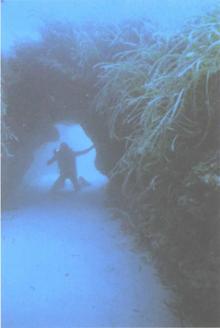 Underworld: The Mysterious Origins of Civilization
Underworld: The Mysterious Origins of Civilization The Master Game: Unmasking the Secret Rulers of the World
The Master Game: Unmasking the Secret Rulers of the World America Before
America Before Entangled
Entangled War God: Nights of the Witch
War God: Nights of the Witch War God: Return of the Plumed Serpent
War God: Return of the Plumed Serpent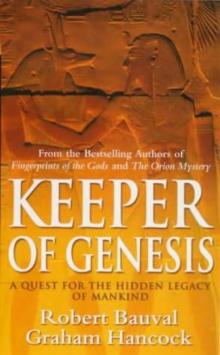 The Message of the Sphinx AKA Keeper of Genesis
The Message of the Sphinx AKA Keeper of Genesis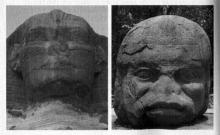 Fingerprints of the Gods
Fingerprints of the Gods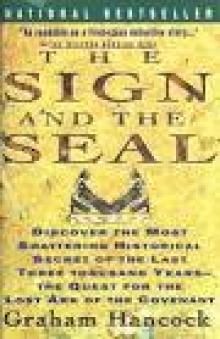 The Sign and the Seal
The Sign and the Seal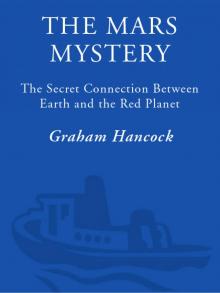 The Mars Mystery: The Secret Connection Between Earth and the Red Planet
The Mars Mystery: The Secret Connection Between Earth and the Red Planet Magicians of the Gods: The Forgotten Wisdom of Earth's Lost Civilization
Magicians of the Gods: The Forgotten Wisdom of Earth's Lost Civilization War God
War God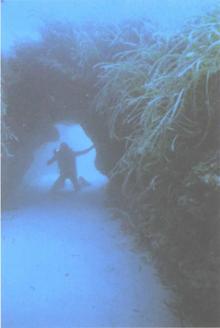 Underworld
Underworld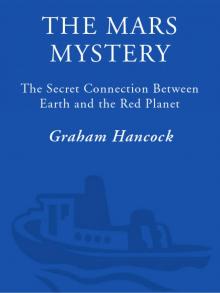 The Mars Mystery
The Mars Mystery Magicians of the Gods
Magicians of the Gods The Master Game
The Master Game